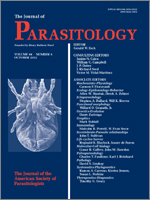Hepatozoon spp. (Apicomplexa: Haemogregarinidae) are the most commonly reported hemoparasites from snakes. Of over 300 Hepatozoon species identified, more than 120 were described from snakes. However, recent genetic assessments have found Hepatozoon lineages recovered from both prey and predators, indicating that diet may play an important role in the infection of final vertebrate hosts. Here 4 different snake genera with different diets were assessed. Hepatozoon spp. prevalence varied greatly between the genera, but only lineages already identified from potential prey, i.e., gecko and lacertid lizards, were recovered from the snakes. Interestingly, the Hepatozoon spp. lineage known from geckos was the most common in the snakes, but this does not reflect their diet. Higher parasitemia levels, reported for some geckos relative to lacertid lizards, may play a role. Alternatively, this lineage may be more effective at parasitizing snakes or may occur, despite being unrecorded, in other vertebrate groups consumed by snakes.
How to translate text using browser tools
1 October 2012
Hepatozoon Infection Prevalence in Four Snake Genera: Influence of Diet, Prey Parasitemia Levels, or Parasite Type?
Beatriz Tomé,
João P. M. C. Maia,
D. James Harris
ACCESS THE FULL ARTICLE

Journal of Parasitology
Vol. 98 • No. 5
October 2012
Vol. 98 • No. 5
October 2012




